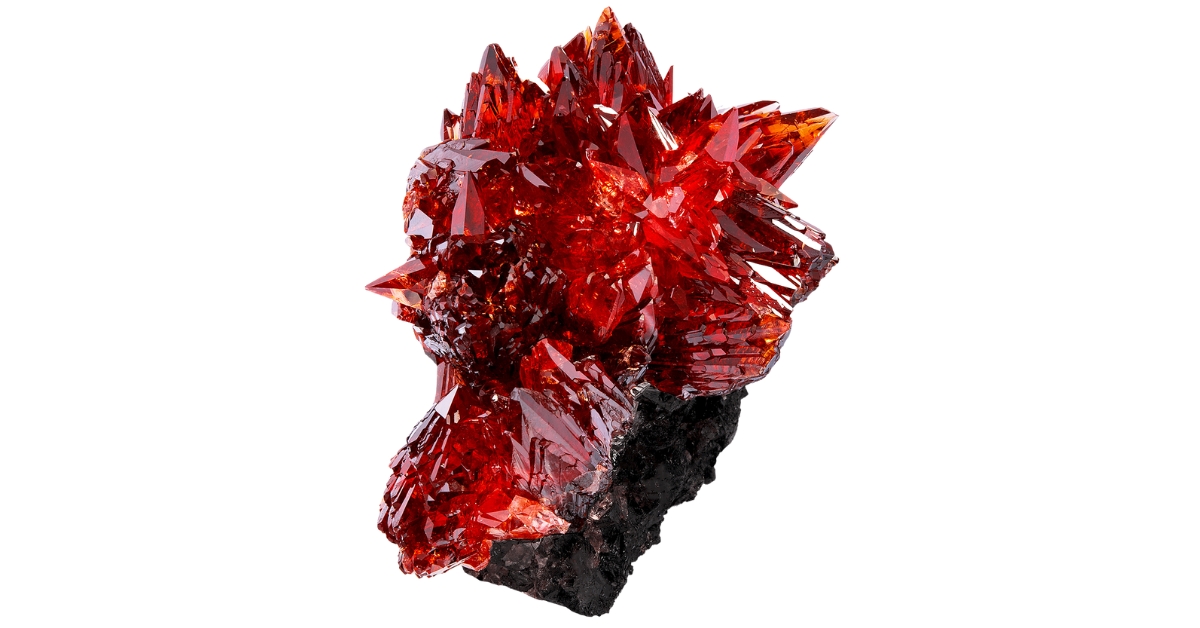Red crystals are more than just pretty stones; they are natural wonders with a story to tell. Some of them are light red crystals, sparkling with a soft glow, while others are dark red crystals, deep and mysterious.
In this article, we’ll dive into the exciting world of these red treasures. You might find a light red crystal that looks like it’s blushing, or a dark red one that’s as rich as velvet. Each one has its own personality and history!
Whether you’re a rockhound looking for your next treasure or just curious about these fiery wonders, there’s so much to learn and explore about red crystals.
Our Favorite Red Crystals
First off, we’ll share our favorite red crystals bursting with fiery colors and stories. The richness of their hues can dazzle anyone who sets their eyes on them. Let’s explore each one of these red beauties!
Ruby

Ruby crystals have been cherished for thousands of years, symbolizing love and power in ancient cultures.
Kings and queens wore them as crowns and jewelry, believing in their ability to protect and guide. In the past, warriors also carried them into battles for courage, and people traded them as precious goods.
The vibrant red color comes from traces of chromium, making each piece of ruby crystal unique.
Ruby’s price has always been high due to its rare beauty and the tough conditions needed for its formation. It’s not just the deep red glow that makes it special; its hardness and durability make it perfect for stunning, lasting jewelry.
Cinnabar
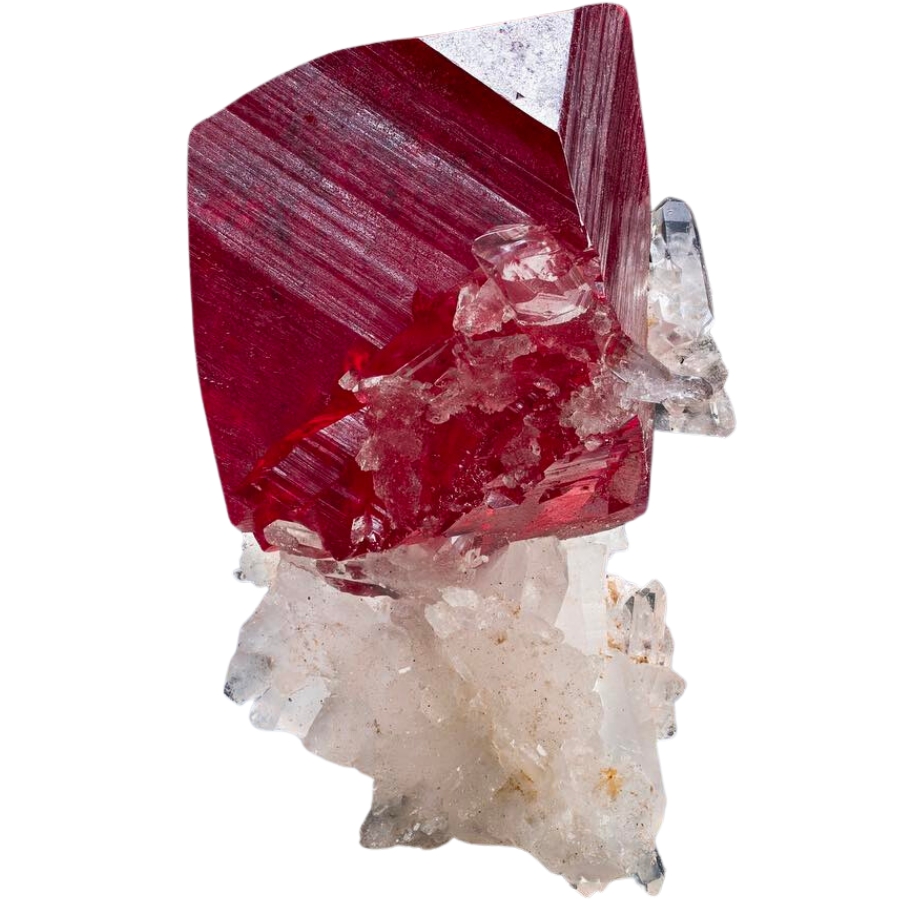
Cinnabar has been known since ancient times for its vibrant red crystals. It’s the main ore of mercury, which was used in many old practices, from medicine to art.
People in ancient cultures ground cinnabar to powder to make a bright red pigment called vermilion, used in stunning artworks and calligraphy.
Cinnabar’s value comes from its historical significance and striking beauty. It’s treasured by collectors who appreciate its rich color and shiny crystals.
While it’s not commonly used today because of its toxic mercury content, it remains a symbol of artistic heritage.
Red Diamond
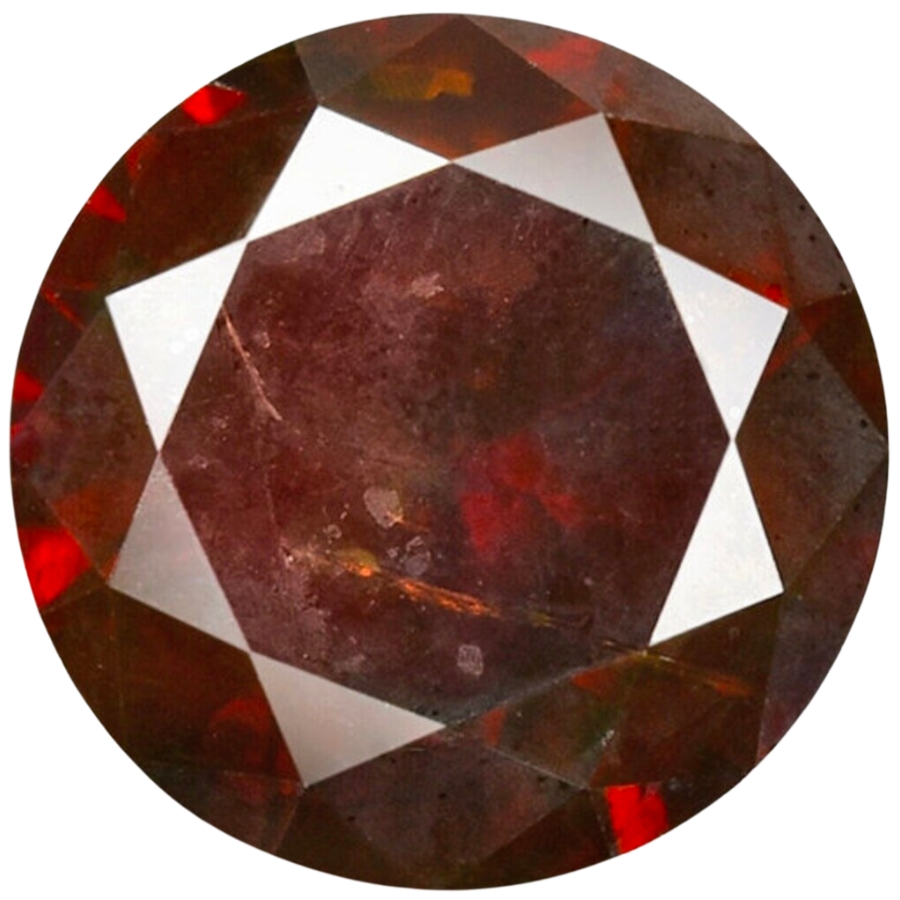
Red diamonds are among the rarest gems ever found, with a history as mysterious as their color. Their intense red hue comes from a unique twist in their atomic structure, making each one a marvel.
These stunning stones have been treasured by kings and collectors for centuries, often featured in royal jewelry to showcase their rarity and beauty.
The price of a red diamond reflects not just this rarity, but also the deep, vibrant color and the intrigue it carries.
They’re valued for their unmatched color and the way they symbolize wealth and wonder, capturing hearts and imaginations around the world.
Malaia Garnet
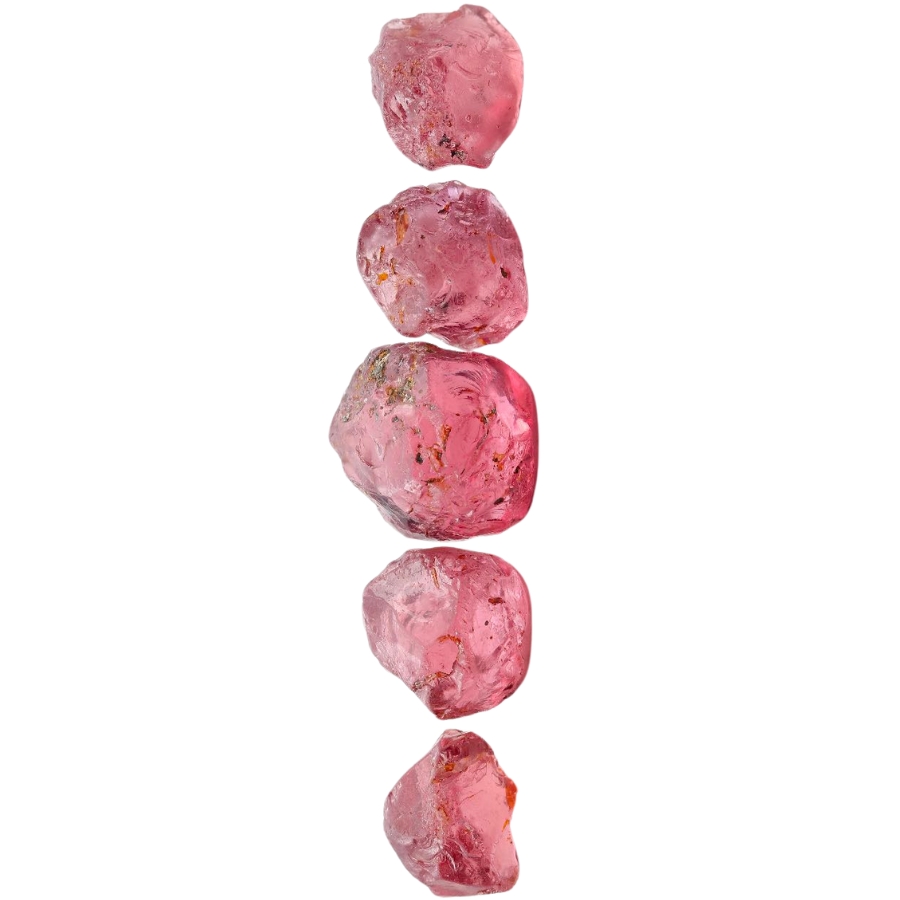
Malaia garnet is a unique gem that was first discovered by accident in the 1960s. It’s a mix of two garnet types, giving it a range of colors from pinkish-orange to reddish-brown.
Initially, miners didn’t know what to make of it, but soon its warm, glowing colors won people over.
It’s been used in all sorts of jewelry, from rings to necklaces, adding a touch of rare beauty.
The value of malaia garnet comes from its rarity and the lovely, changing hues it displays. It’s cherished for its uniqueness and the way it stands out from other gems with its unusual color mix.
Rhodochrosite
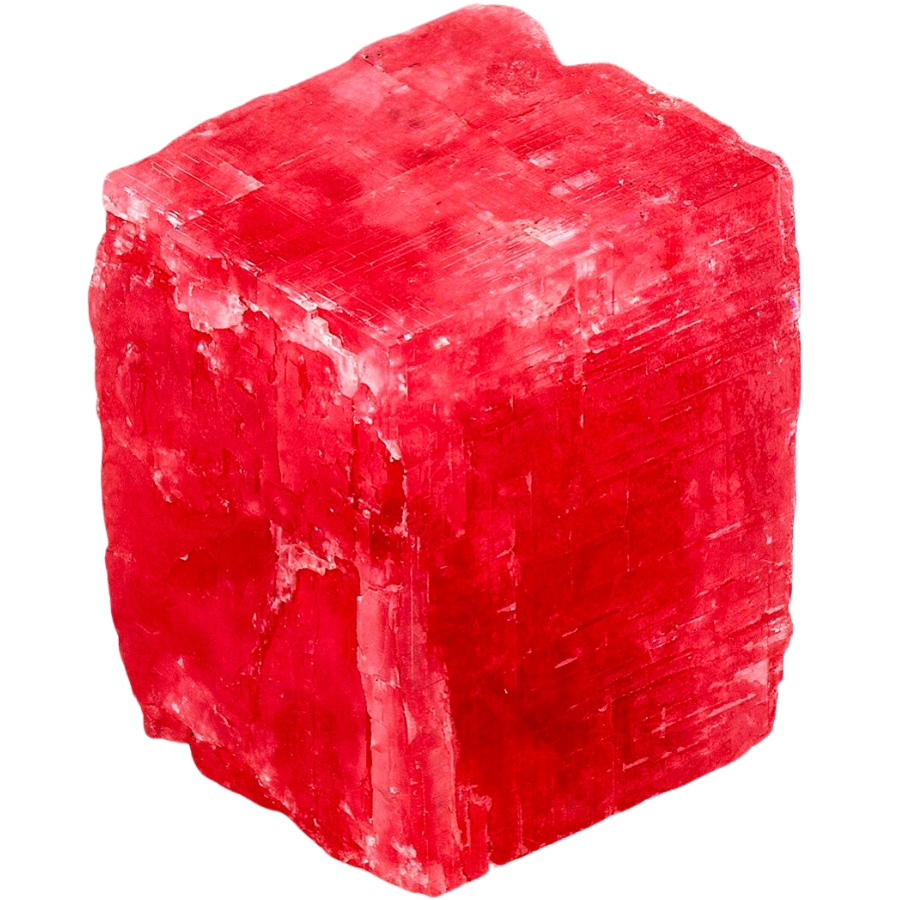
Rhodochrosite has a special place in history, with its warm, rosy colors and swirled patterns.
Found in ancient silver mines, it was first admired by Incan civilizations, who called it “Inca Rose.” As a symbol of love and balance, it was crafted into stunning jewelry and used in ceremonies.
Over time, this stone has become a favorite for collectors and jewelers, valued for its unique, banded beauty and the soft, comforting colors that range from pink to red.
Rhodochrosite stands out for its patterns that are as individual as fingerprints, making each piece a one-of-a-kind treasure.
Vanadinite
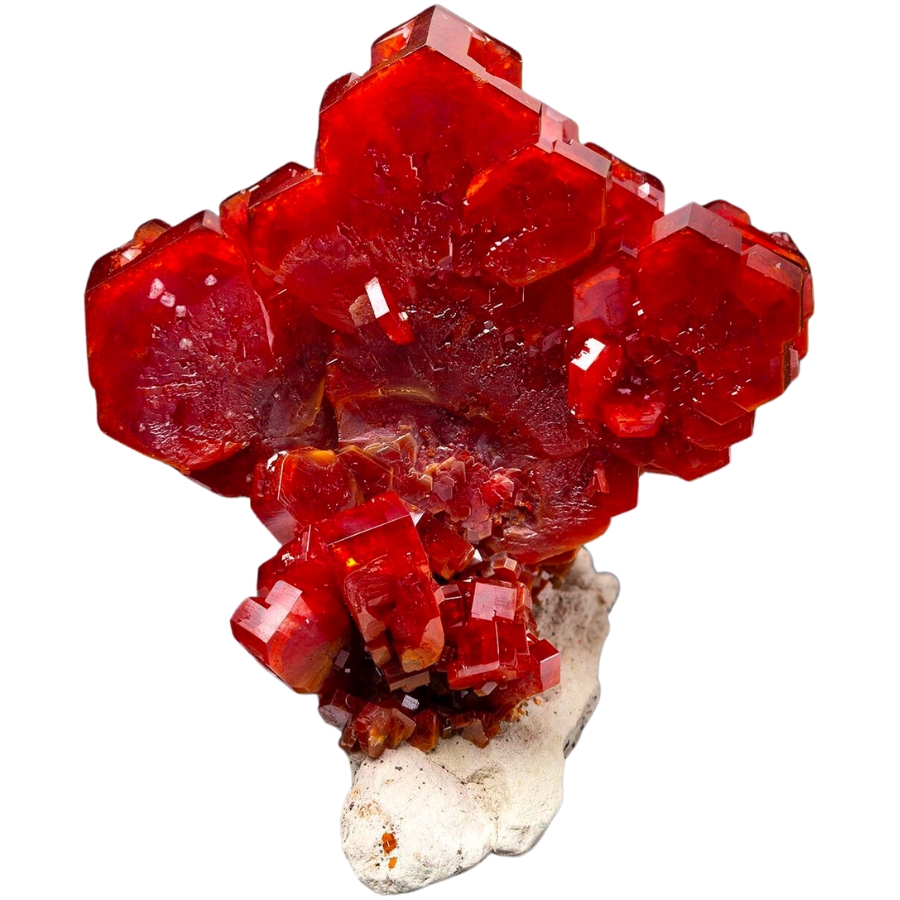
Vanadinite is a bright red mineral that was discovered in the 1800s. It gets its color from vanadium, a metal used to make strong steel.
While it’s not typically used in jewelry due to its softness, vanadinite is a star among mineral collectors for its vibrant, fiery color and shiny, hexagonal crystals.
It’s often found in dry, desert areas, sparkling like tiny rubies.
Vanadinite is valued for its striking beauty and rarity. Those who collect it are fascinated by its unique, geometric shapes and the way its red crystals can light up a whole room with their glow.
Dark Red Crystals
Now, let’s dive into the mysterious world of dark red crystals. Each of these wonders is endowed with deep rich red hues that can catch anyone’s attention with one look. See for yourself what makes them captivating and breathtaking.
Almandine
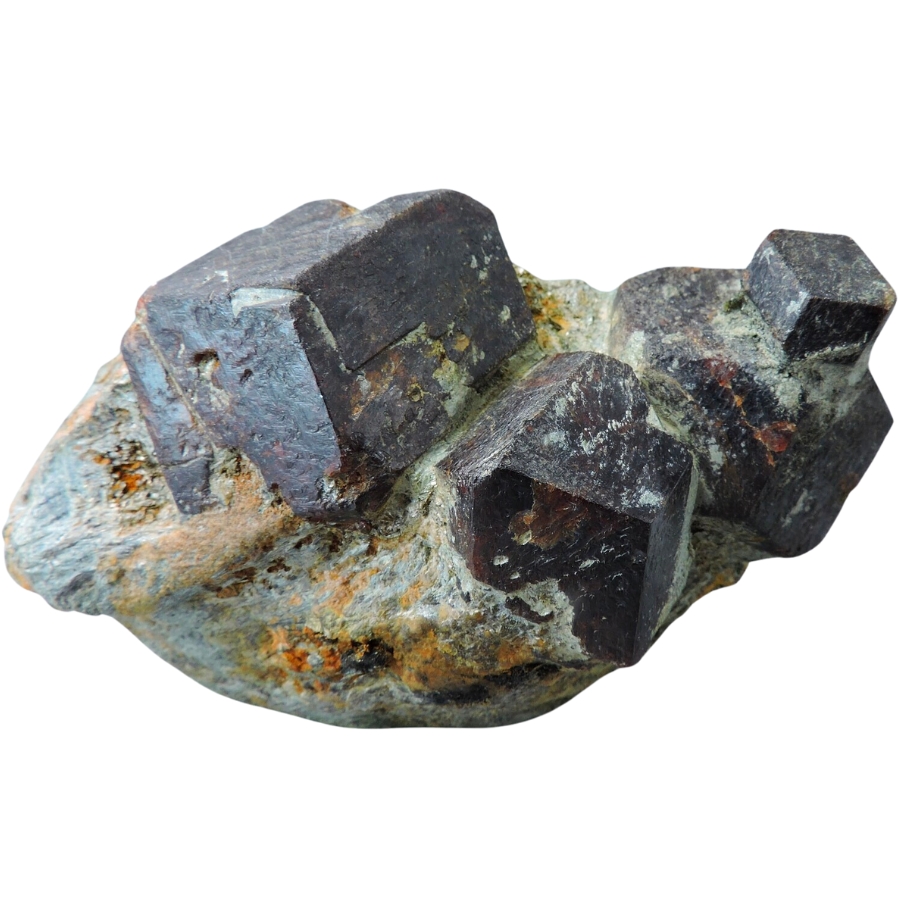
Almandine, a garnet with dark red crystal, has been admired since ancient times for its rich color and sparkle.
It’s often found in jewelry from the Victorian era, where it was loved for its elegance and strength. Long ago, travelers also carried almandine as a talisman to ensure safe journeys.
Its hardness makes it perfect for everyday wear, which added to almandine’s value over the centuries. People also believed it could bring them peace and light up their lives with its bright red hue.
The beauty and durability of almandine have made it a lasting symbol of affection and a favorite in various cultures around the world.
Cuprite
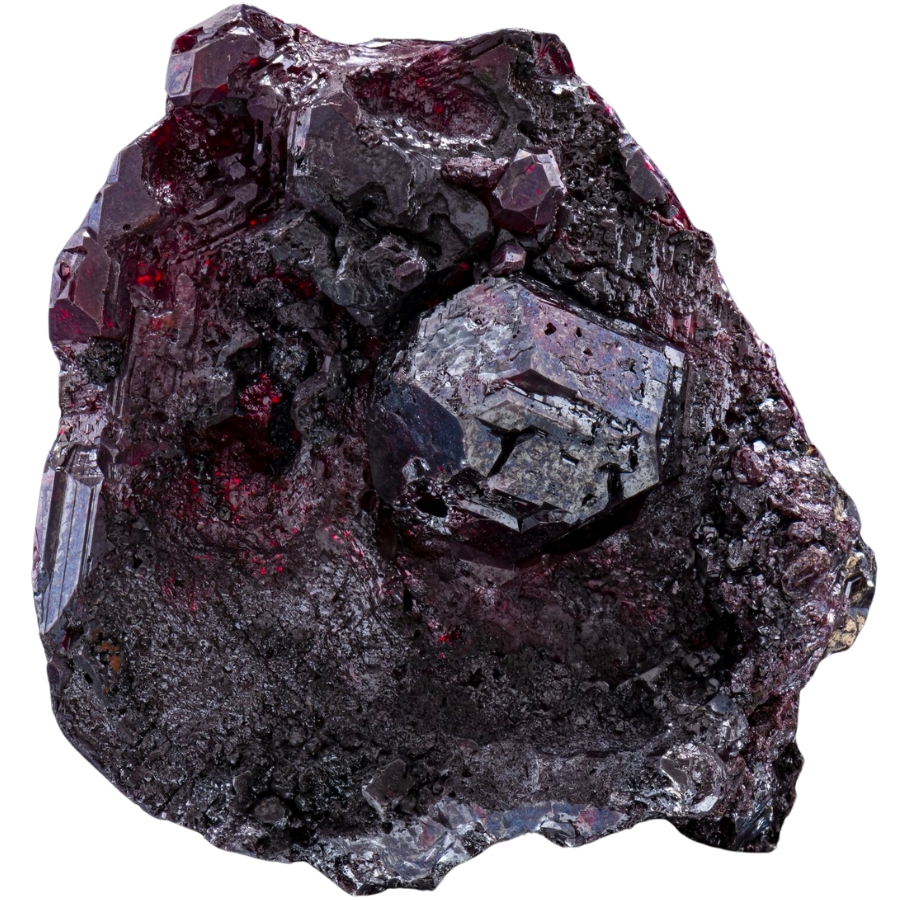
Cuprite, with its deep, red color, was first discovered in the 1800s. It’s a unique mineral because it’s made of copper, which gives it a rich, metallic shine.
In history, it was important for extracting copper, especially when pure metal was hard to find.
It’s not commonly used in jewelry due to its softness, but it’s still a favorite among those who appreciate its glassy luster and dark red crystal.
Cuprite is valued for its rarity and the stunning way it reflects light, making it a fascinating gem for those who love rare and unusual stones with a natural, earthy beauty.
Manganotantalite
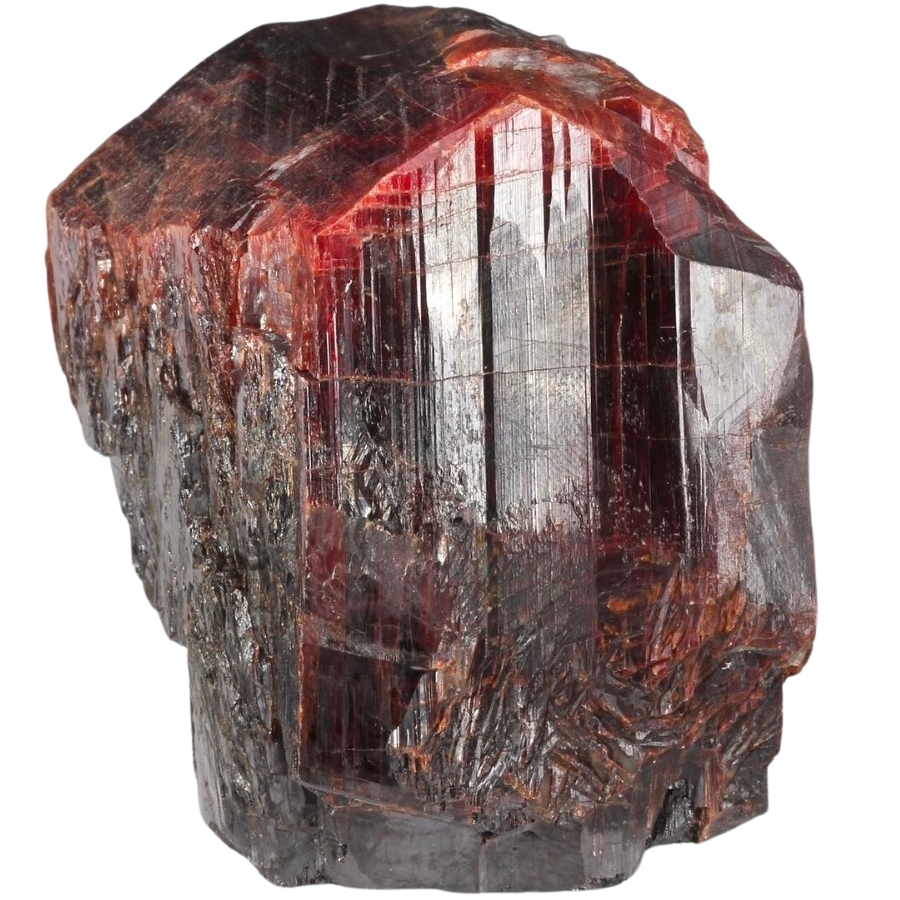
Manganotantalite is a rare mineral known for having striking reddish-brown to burgundy crystals. It was discovered in the 1800s and got its name from its composition, containing manganese and tantalum.
This mineral is not typically used in jewelry due to its rarity and the fact it’s more valued for its scientific interest.
Industries value manganotantalite for its tantalum content, used in electronics and alloys for its resistance to corrosion and high temperatures.
Collectors and researchers treasure it for its unique properties and the clues it gives about the natural processes that create such rare and fascinating minerals.
Painite
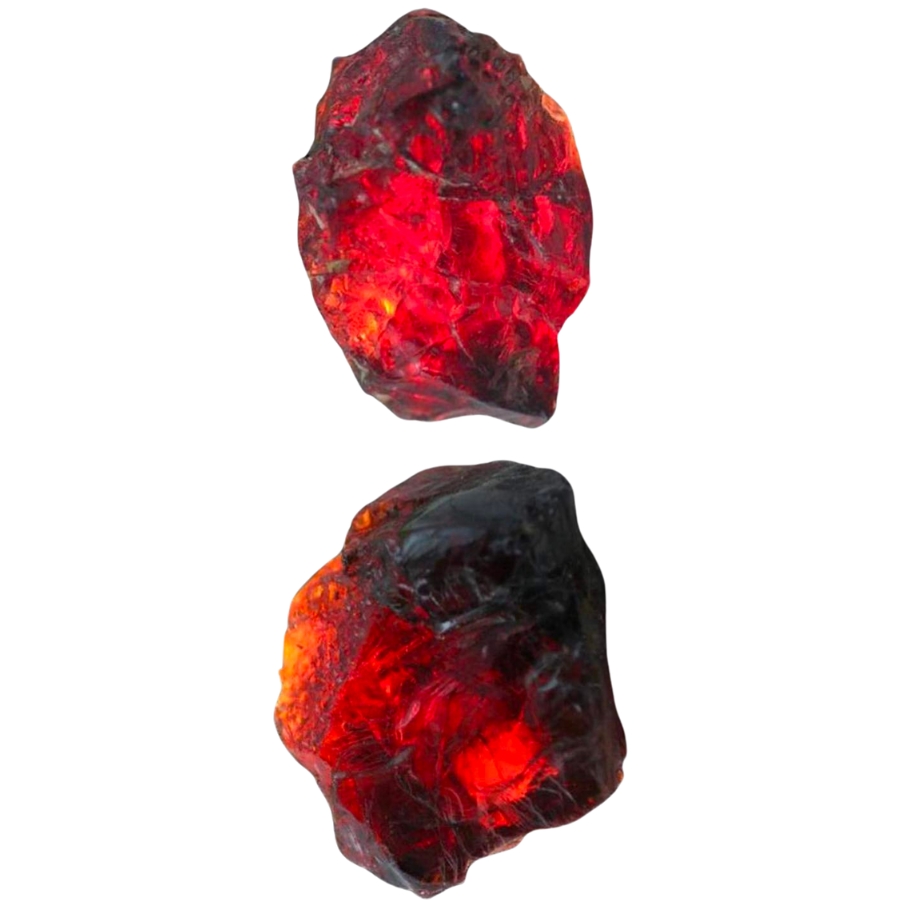
Painite was once the world’s rarest mineral, discovered in Myanmar in the 1950s. For decades, only a few specimens were known, making it a legend among gem hunters.
This deep brown to dark red crystal was hard to find and often mistaken for other minerals.
Painite is valued for its extreme rarity and the challenge it posed to those who sought it.
As more stones have been found, it’s become a cherished item for serious collectors who delight in owning a piece of unique finds. Its value lies in its story, from obscurity to a prized and recognized gem.
Proustite

Proustite is a bright red mineral known for its striking color and silver content. Discovered in the 1800s, it was named after the French chemist Joseph Louis Proust.
In the past, proustite was important in the photography industry for its light-sensitive properties.
Today, it’s a rare find and highly valued among collectors for its vivid, ruby-red crystals and the way it sparkles in the light.
Its rarity and the challenge of finding it in good condition make it a special piece for anyone interested in the unique and beautiful treasures.
Pyrope
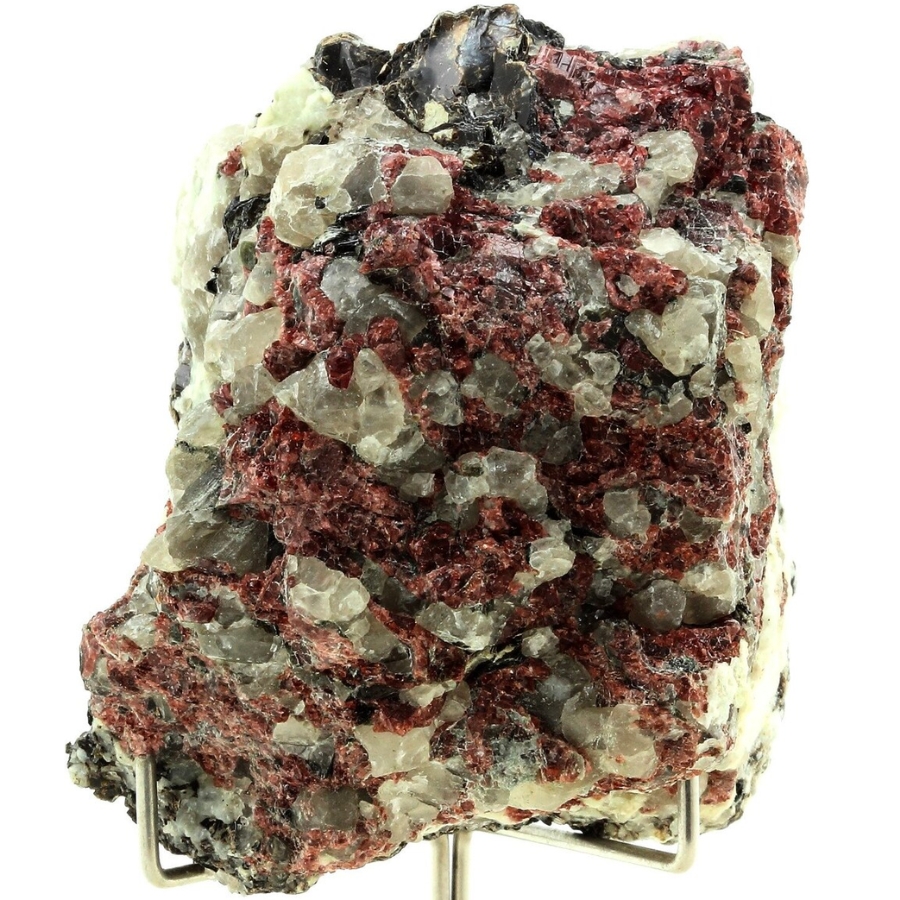
Pyrope is a type of garnet famous for its deep red color, resembling the pomegranate seeds its name suggests.
It’s been used in jewelry for centuries, found in everything from ancient Egyptian necklaces to Victorian brooches.
Pyrope’s value comes from its striking beauty and durability, making it a favored choice for pieces that last through the ages. It shines with a fiery glow that catches the eye, symbolizing love and vitality.
The rich, red sparkle of this gem continues to captivate those who appreciate the natural allure and lasting legacy of this stunning gemstone.
Rutile
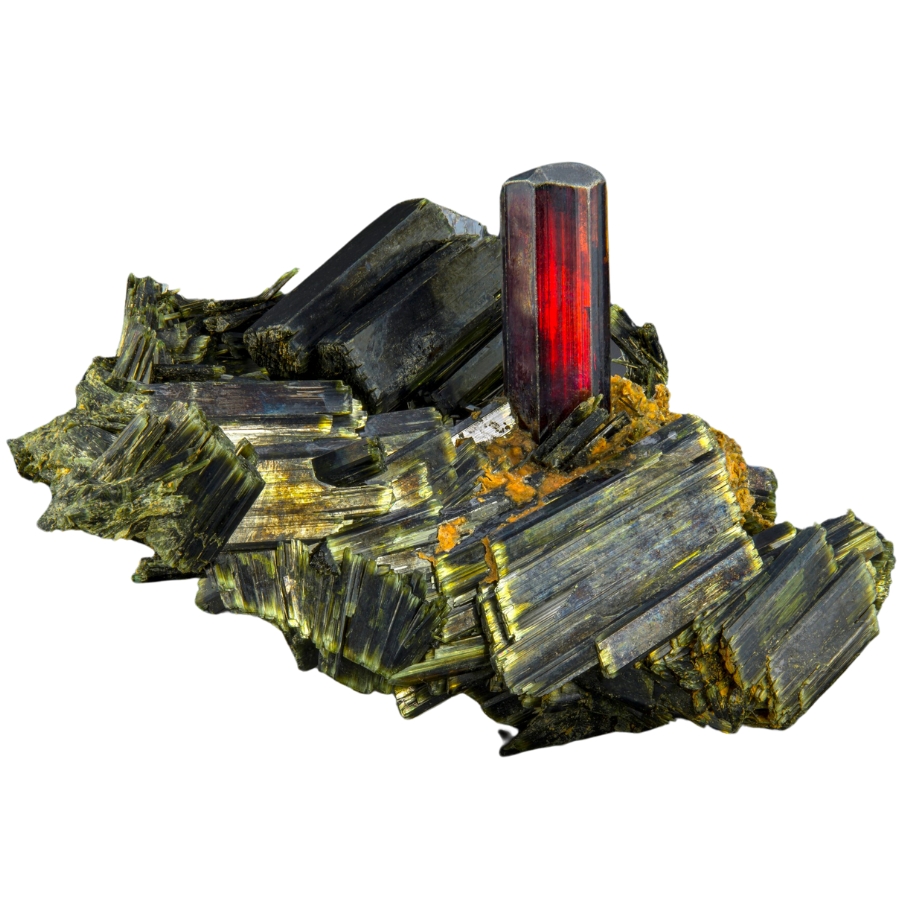
Rutile has been fascinating folks since its discovery in the late 1700s. It’s a mineral filled with long, thin, dark red crystals. It’s a key source of titanium, which is super strong and light.
Because of this, rutile has been used to make things like spacecraft and golf clubs! It’s also found in paints and plastics, making it a part of everyday life.
But rutile isn’t just about being useful; it’s also beautiful. When it appears in other gems, it creates a sparkly, starry effect.
Its mix of practicality and beauty is what makes rutile so valued and interesting.
Villiaumite
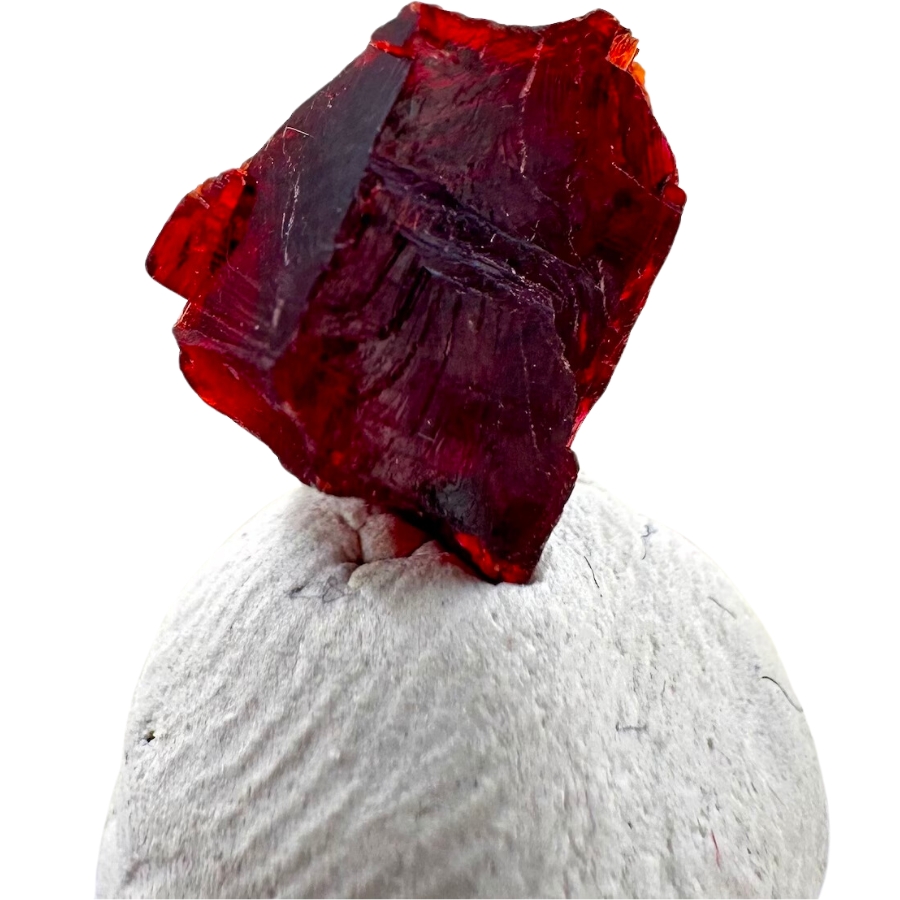
Villiaumite is a rare mineral known for its striking red color. It’s found in only a few places worldwide, having been discovered in 1908.
This mineral is mainly composed of sodium and fluorine. While it’s not used in jewelry because it’s too soft and can be quite toxic, villiaumite is greatly valued by mineral collectors for its rarity and vivid color.
It’s often displayed in museums and collections, where it’s admired for its beauty.
Collectors and experts are always excited to find villiaumite because it’s such a rare piece of nature’s art.
Light Red Crystals
In this section, we’ll step into the sparkling world of light red crystals. Each of the natural wonders that we’ll share with you shines with a soft, rosy glow. Get ready to be delighted by these delicate beauties.
Carnelian
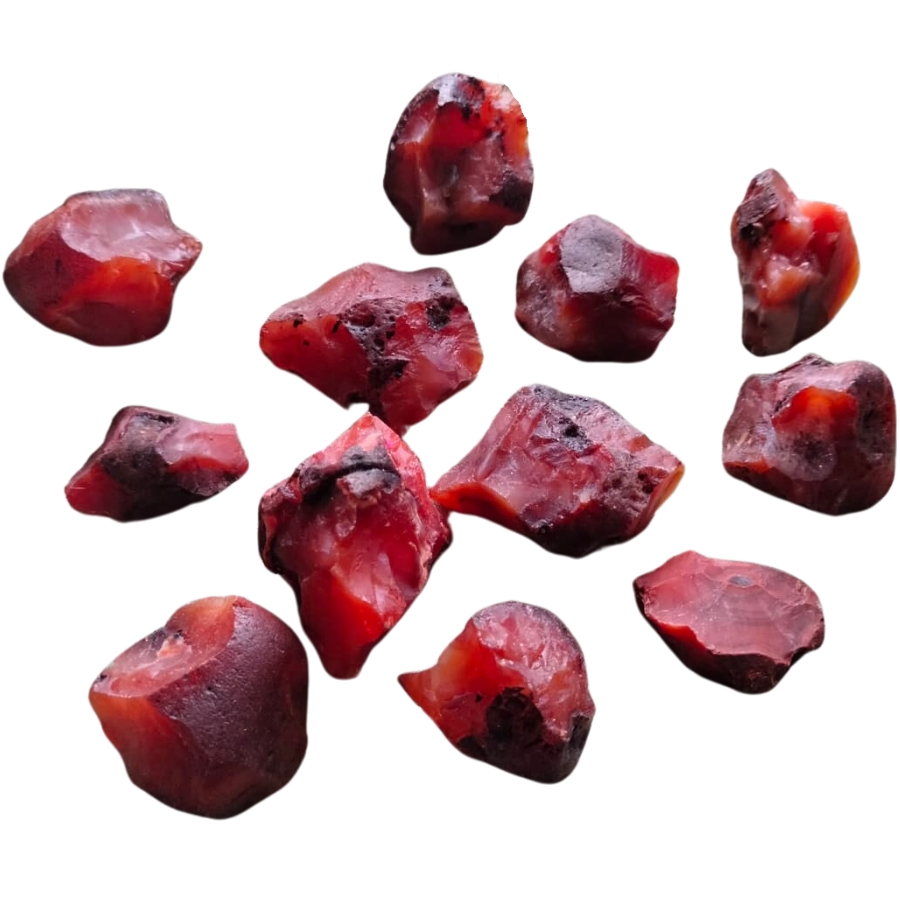
Carnelian, with its warm, inviting orange to light red crystal colors, has been cherished for thousands of years.
Ancient warriors wore it for courage, and artists crafted it into beautiful jewelry and seals. This gem was also popular in ancient Egypt, where people believed it had protective powers.
Carnelian’s value lies in its rich history and the vibrant, life-giving energy it seems to hold.
People are drawn to its bright, cheerful color and the way it has been part of human stories for so long.
Spinel
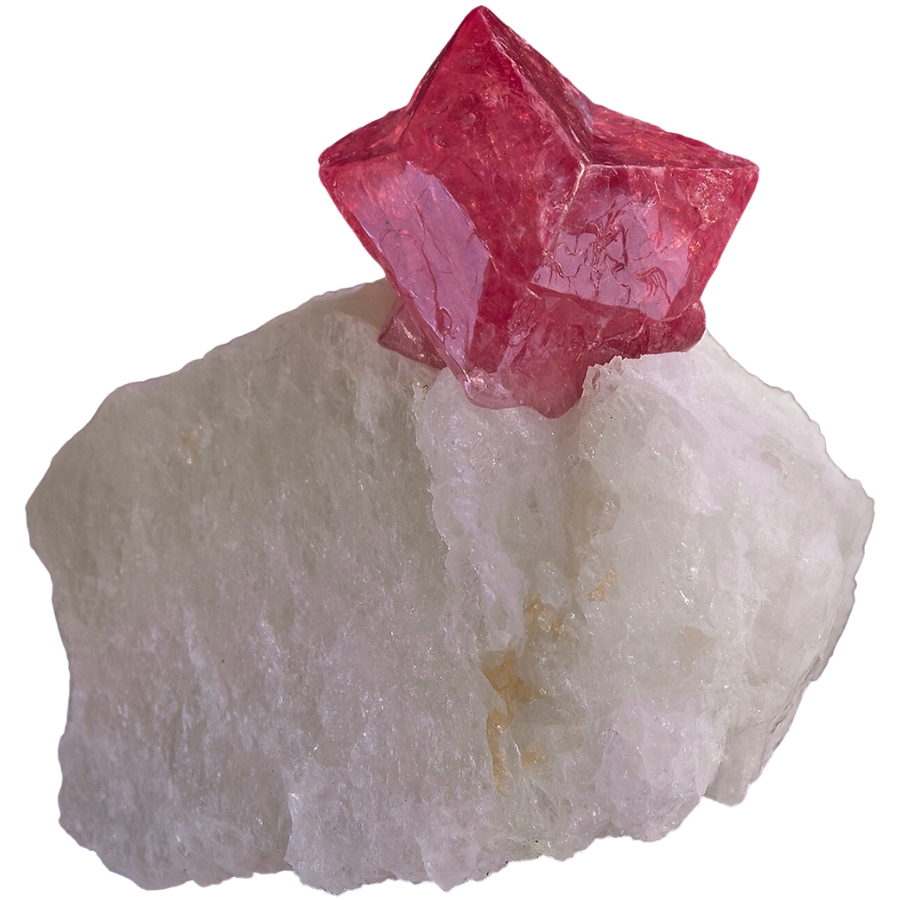
Often mistaken for ruby in crowns and royal jewelry because of its bright red color, spinel has a colorful history.
For centuries, it was treasured alongside other precious gems, adorning the most luxurious items and signifying wealth and power.
Spinel’s true identity was discovered later, but it didn’t lose its charm. It’s still valued for its range of colors, often as a light red crystal, and its durability, which makes it perfect for everyday wear.
People love this gem for its distinct beauty and the way it sparkles just as brilliantly as other, more well-known gems.
Bixbite (Red Beryl)
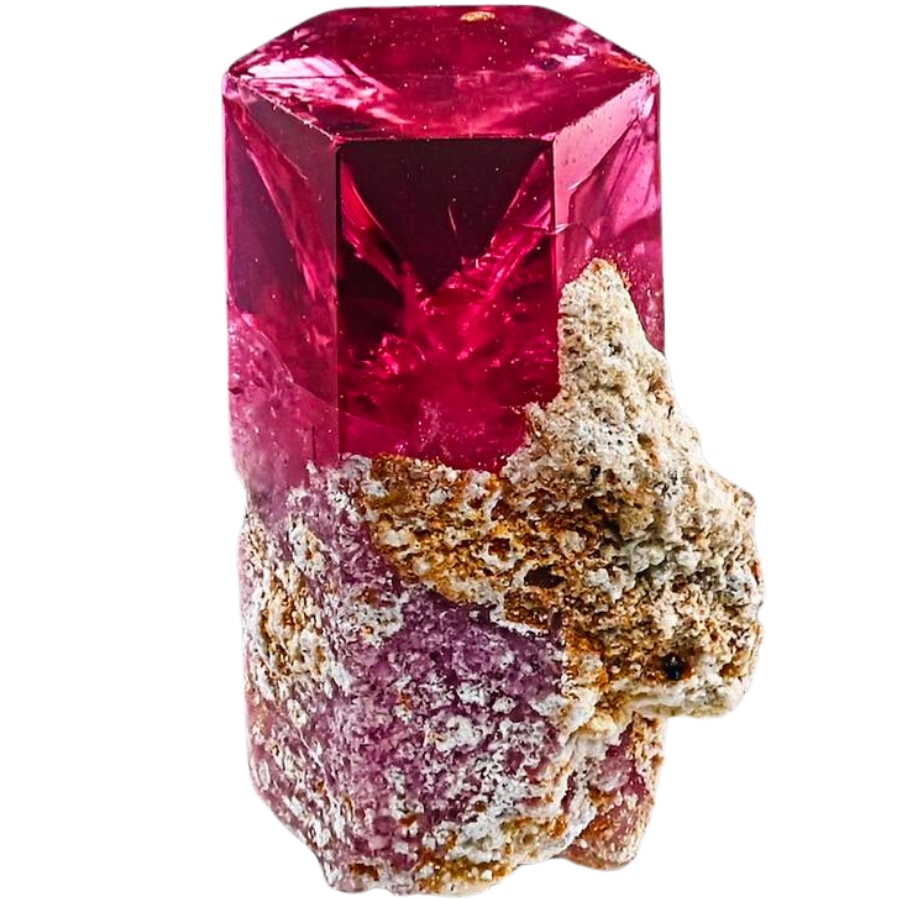
Bixbite, commonly known as red beryl, is a rare gem that was first discovered in Utah in the early 1900s. Its light red crystals make it stand out.
Because it’s so rare, finding bixbite is like finding a treasure. It’s mostly collected by people who love its rarity and beauty.
This crystal is valued for its interesting color and scarcity, making it a prized possession for anyone lucky enough to own a piece.
Its allure isn’t just in its looks; it’s also about the excitement of having something so unique and special.
Nambulite
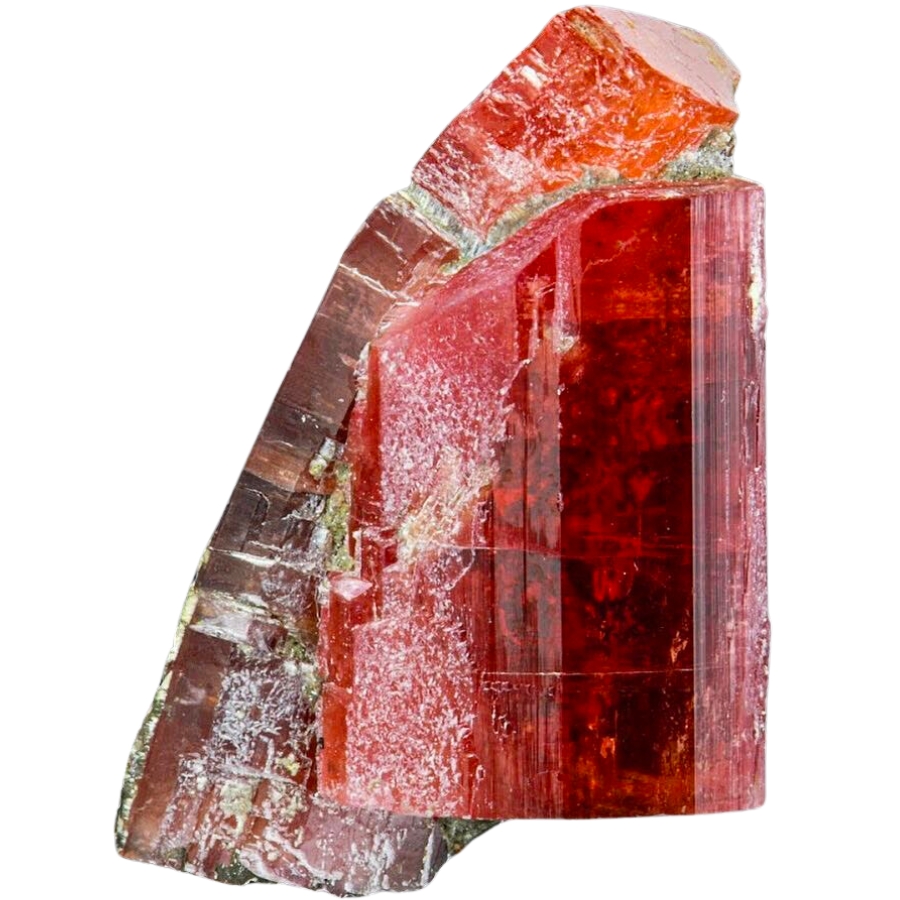
Nambulite is a rare and colorful mineral, first discovered in Japan in the 1970s. It stands out with its bright orange and light red crystals, which are quite unusual for minerals.
It isn’t typically used in jewelry because it’s pretty rare and delicate, but it’s greatly valued by those who collect rare minerals.
Its value comes from its uniqueness and the vibrant colors it displays.
Finding a piece of nambulite is exciting for collectors because it’s not something you see every day. It’s treasured for being a rare gift from nature.
Pyroxmangite
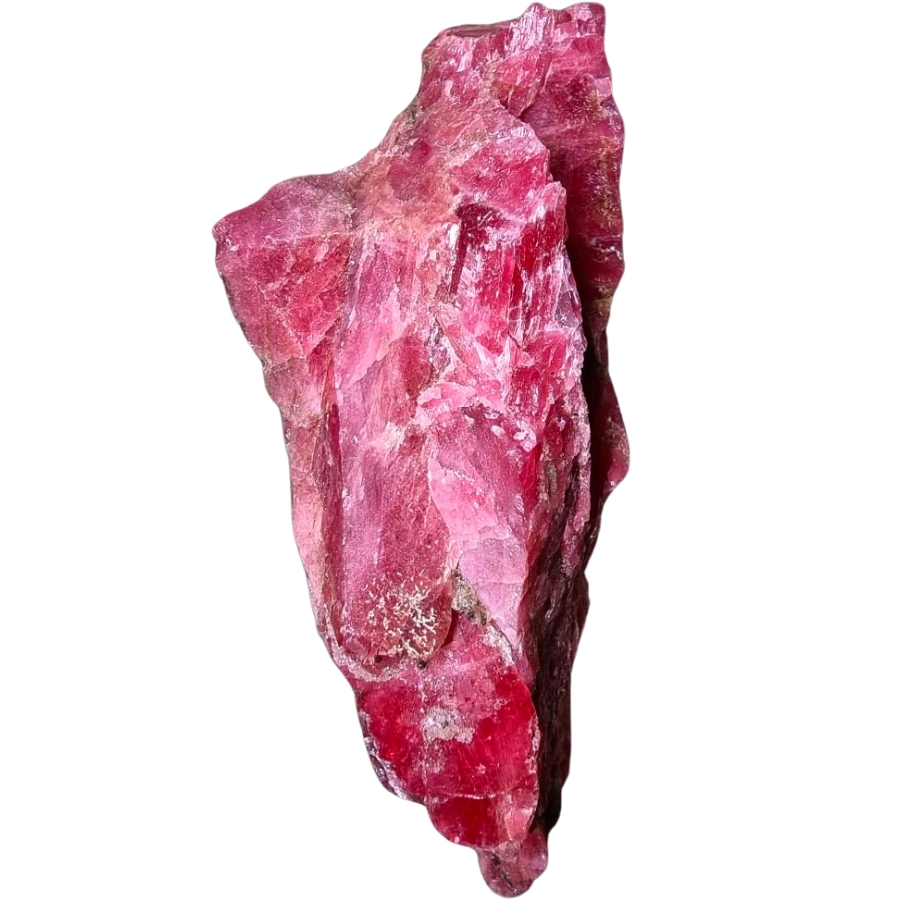
Another light red crystal that was first identified in Japan in the early 1900s is pyroxmangite.
It’s known for its deep pink to light red colors, which make it pretty unique. It’s not commonly used in everyday items or jewelry, but it has a special place among those who love collecting rare minerals.
Pyroxmangite is valued for its rarity and the beautiful colors it shows off.
Collectors are thrilled to have it in their collections because it’s not something you find just anywhere.
Zincite
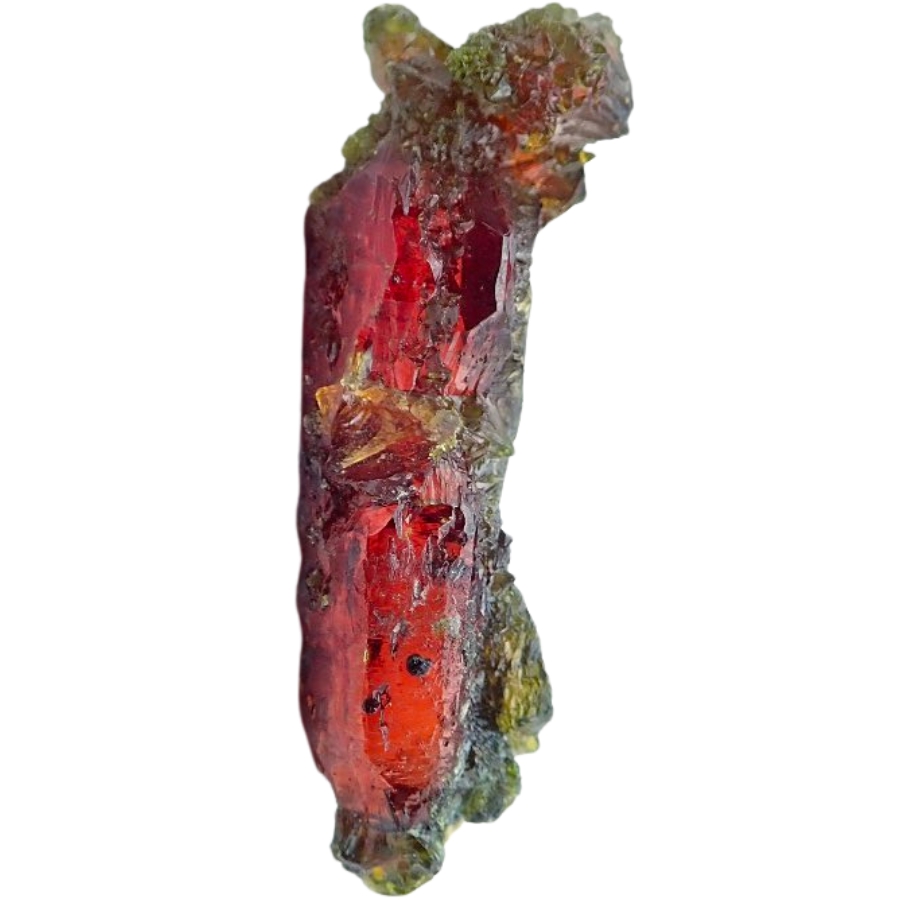
Zincite is an interesting mineral that’s been around since it was first discovered in Poland in the 19th century. It’s usually light red or orange, which makes it stand out.
This crystal was actually first found by accident in the chimneys of zinc smelting factories!
It’s not typically used in jewelry because it’s quite rare and fragile, but it’s valued by those who collect unique minerals.
People love zincite for its vivid colors and the way it lights up a room. It’s a favorite for those looking to add something special and colorful to their collection.

